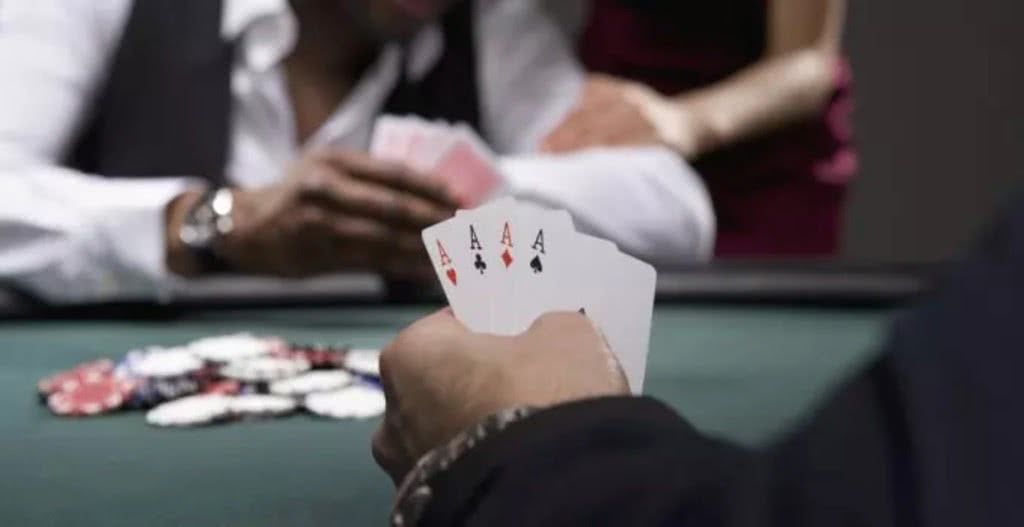- A Global Filming Guide: Do’s, Don’ts, and Must-Knows - February 14, 2024
- Low-Income Americans’ Surprising Spending Habit - December 4, 2023
- France’s Startling Act of Aggression - December 1, 2023
According to Silverthorne, if you follow the ‘Nine-Count Blackjack strategy,’ you can make $94 per hour playing blackjack in the comfort of your own home. He claims that players who follow his system have a 91.1 percent chance of winning, and the best part is that all you need to get started is a sixty-dollar bankroll.
Most of the time, there is a simple explanation for why something appears to be too good to be true; that explanation is that it is! Nonetheless, let’s give it a shot and put it through an exhaustive and objective review to see what the outcome will be. The Nine-Count Blackjack Strategy Review is now available.
In a nutshell, the strategy is divided into two parts: the nine-count blackjack playing strategy and the nine-count blackjack betting method. The strategy is made up of these components. It is said that if you can do both of these things, you will be able to make thousands of dollars every week.
The Nine Counts Blackjack Playing Strategy
Of course, the basic strategy for the game of real money blackjack is very similar to the strategy used by Silverthorne when playing the game.
Strategy for playing blackjack in European casinos
The only significant differences between the above-mentioned playing strategy and the Nine-Count strategy are as follows:
You Must Increase your bets
Player’s 10 vs. dealer’s 4, 5, 6, or 7 s9 from the player vs. dealer’s 5 or 6
There are no instructions or guidelines in the book on how to play 5-5. The European Strategy suggests starting at number two and working your way up to number nine. For our strategy test, we strictly followed the information in the book; thus, doubling would occur only if the dealer held 4, 5, 6, or 7 in contrast to our 5, 5.
Keeping the Twos Apart
Although Silverthorne’s book recommends splitting aces and 8s every time, the author does state that if we are playing blackjack internationally—I assume European blackjack—we should follow the same rules as those listed in the table above.
Blackjack Betting Strategy Using the Nine-Count
The foundation of the Nine-Count Blackjack Betting Strategy is based on a significant portion of what Silverthorne refers to as the ‘Profit Advantage Bet.’ According to him, a player has a 47.5 percent chance of winning every 100 hands of blackjack, while the casino has a 52.5 percent chance of winning every 100 hands. His research into thousands of simulated hands, on the other hand, produced a record of 48.5 percent winning wagers that directly followed a single winning wager. To put it another way, after winning a single wager, he went on to win the next wager 48.5 percent of the time. As a result, he’s given the second wager the moniker “Profit Advantage Bet.”
Even though we have not conducted as extensive tests as Silverthorne, we have serious concerns about why this should be the case. Surely, the house edge of blackjack would apply, and the long-term win rate would be the same 47.5 percent for any wager at any point in the game.
The Nine-Count Blackjack Strategy incorporates this ‘Profit Advantage Bet’ by claiming that it has been statistically proven (via the author’s testing) that a player will win more second bets, and as a result, the strategy instructs players to parlay any single bet winnings onto the next hand. This is true, even if we disagree with the assertion.
This betting series begins with a $5 wager at level 1, the entry-level. If you lose that wager, you will move on to level 2, which also costs $5. If you fail level 2, you will be advanced to level 3, which will cost you an extra $5. If you fail level 3, you will advance to level 4, which has a new ten-dollar bet.
If you win level 4, you must parlay that bet, which means that your original $10 level 4 bet plus your winnings, plus another $10, totaling $20, must be bet on the next hand. If you win that bet, you return to level 1 and repeat the sequence. The bets are structured in such a way that the parlay win cancels out the previous string of losses.
You advance to level 5 if you lose the level 4 parlay bet. As a result, the basic idea is that you must win two hands in a row (back-to-back) to break the casino and return with a profit. However, you only have 9 levels to accomplish this. If you reach level 9 and lose, the game is over and you will most likely have run out of money or will be close to the casino’s house limit if you continue.
Real-world testing of the strategy
With pushed hands excluded (332 – 33 +299), our win percentage was 47.492 percent and our loss percentage was 52.508 percent. According to our sample figures, our strategy was in line with Silverthorne’s win/loss percentages, which he mentions in his book as a 47.5 percent win / 52.5 percent loss ratio.
We won 11 of the 16 games, for a 68.75 percent game-win percentage. Although this sounds impressive, it falls far short of Silverthorne’s claimed 91.1 percent using the Nine-Count strategy. Furthermore, as you can see, when we lose, the hit is much harder than when we win, resulting in a net loss of $172.50.
Each game’s details are listed below the summary, which includes our level, the amount bet, the dealer’s up card, our starting hand (in number form), the action we took (how we played the hand), our finishing hand (if we ‘hit,’ whether we won or lost the hand, and our overall game balance.
A Summary
Based on our findings, we do not believe that this strategy can be used to make money, so don’t quit your day job just yet – sadly.
While the betting strategy makes sense, the requirement to win two consecutive hands in such a short period of time cannot be guaranteed, and because you must move on to the next level if you do not win the second bet (the parlay), you will quickly discover that this strategy is destined to deplete your bankroll more severely than it is to increase it. Overall, we must give this strategy a big thumbs down. Please accept my apologies!

